The art historian, curator and broadcaster on how she came to write her debut book — and why social media is democratising art
‘It’s insane that this book needed to be written,’ Katy Hessel says over Zoom. ‘But its success reflects the hunger we have for stories about women artists who have mostly been overlooked for too long.’
Hessel is of course referring to her Sunday Times bestseller The Story of Art without Men. The 500-page corrective shines a light on art made by women from the 1500s to the 2020s. ‘This is not a definitive history,’ she writes in the introduction. ‘But I am looking to break down the canon I have so often been confronted by in the culture in which I have grown up.’
Divided into five parts, it focuses on significant art-historical shifts and movements as well as a wide range of creative practices, including those often dismissed as ‘craft’.
Was it hard rewriting the history of art without men? ‘Not at all,’ she says with a smile. ‘I saw something was missing and did something about it.’
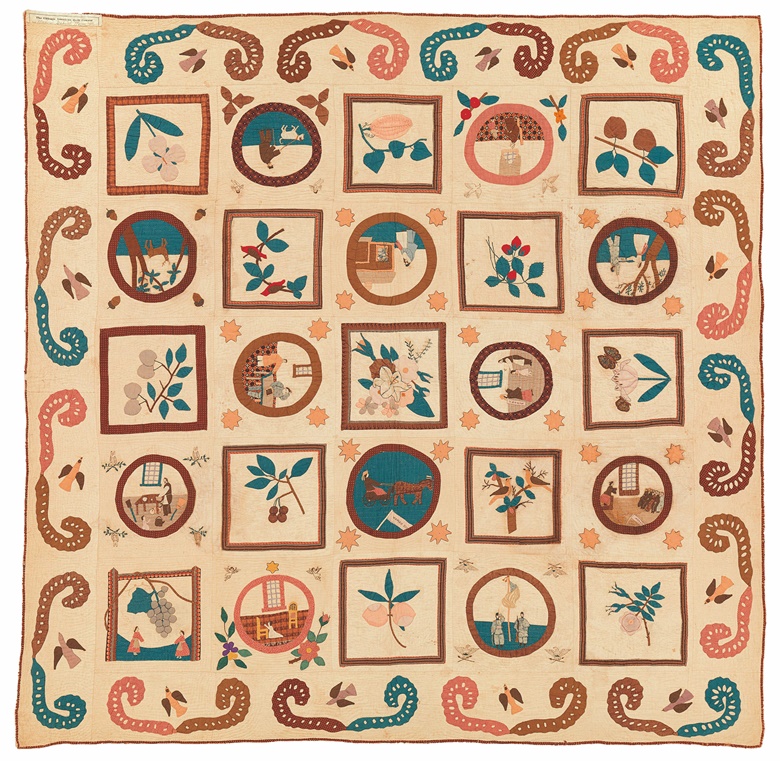
Emma Civey Stahl, Woman’s Rights Quilt, circa 1875. Cotton. Metropolitan Museum of Art, New York. Funds from various donors, 2011 (Acc. No. 2011.538). Photo: The Metropolitan Museum of Art, NY
And Hessel would know. The Story of Art without Men is an extension of her celebrated Instagram account (@thegreatwomenartists), and her popular podcast of the same name.
It all started, she explains, after she visited an art fair in 2015 where she couldn’t see any works by women artists. ‘I then asked myself if I could name 20 women artists off the top of my head. The answer was no,’ she says. ‘Had I essentially been looking at the history of art from a male perspective? The answer was yes.’
And so began her daily ritual of posting on Instagram about the lives and work of women artists past and present, across every medium, from painting to sculpture, photography to textiles.
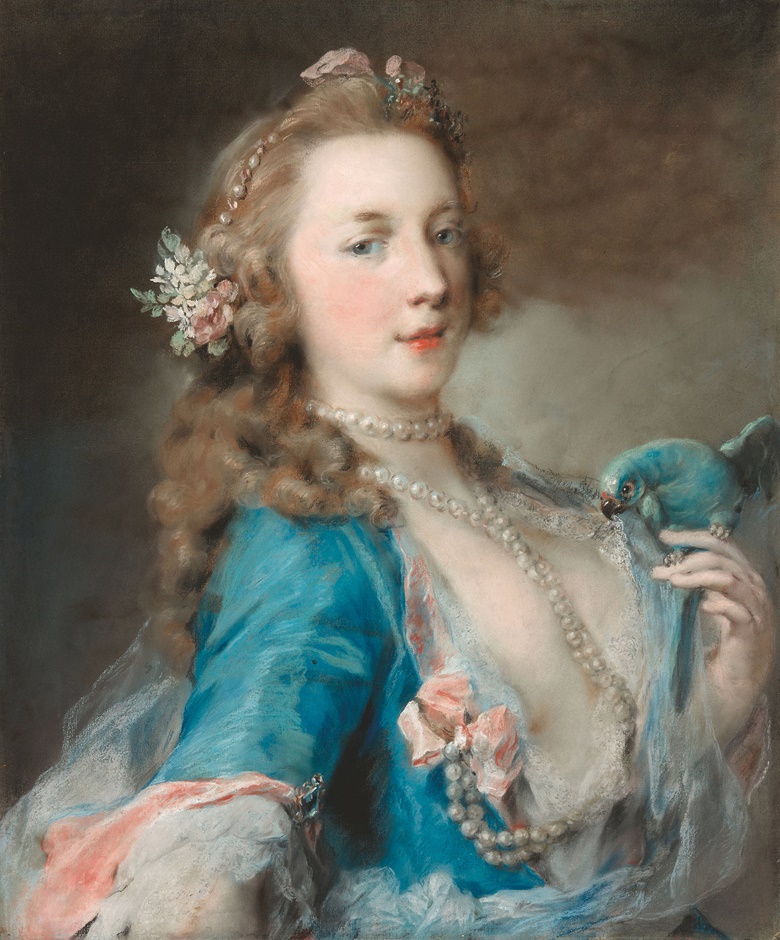
Rosalba Carriera (1673-1757), A Young Lady With a Parrot, circa 1730. Pastel on blue laid paper. Art Institute of Chicago, Regenstein Collection, 1985.40. Photo: Art Institute of Chicago
‘I didn’t have my own platform, so I turned to Instagram,’ she says. ‘It’s such a fantastic space for spotlighting stories. And you just need the internet.’
Does she see a correlation between the rise of Instagram and the growing interest in overlooked artists, contemporary and historical? ‘Absolutely,’ says Hessel. ‘The internet and social media have given people a voice and access to information like never before.’
‘I want people who have never stepped inside a museum or a gallery to read this book and feel like they’re part of the story’
So why write a book? ‘Because Instagram captions and podcast episodes can only take you so far,’ she explains. ‘And there’s something powerful about a tangible object on your shelf that you can go back to again and again.’
Making the history of art as enjoyable, inclusive and accessible as possible is at the heart of everything Hessel does. ‘I want people who have never stepped inside a museum or a gallery to read this book and feel like they’re part of the story,’ she says.
Writing easy, engaging prose, illustrated with beautiful images, is a way of doing just that. ‘I sometimes found certain academic papers really hard to read,’ she admits. ‘I want people to be able to inhale this information, even if they have no prior knowledge of the subject.’
.jpg?mode=max?w=780)
Marie Spartali Stillman (1844-1927), The Enchanted Garden, 1889. 30⅝ x 39¾ in (77.9 x 101.2 cm). Sold for £874,500 on 10 December 2020 at Christie’s in London
Since launching her Instagram account, Hessel has amassed more than 300,000 followers, curated countless exhibitions championing women artists, established an artist residency at Palazzo Monti in Brescia, and lectured at such prestigious museums and institutions as the National Gallery and Tate Modern in London, and the University of Cambridge.
She’s also a columnist for the Guardian newspaper, the host of Dior’s podcast series Dior Talks: Feminist Art, and an arts presenter for the BBC. Now she’s collaborating with Christie’s in London on the occasion of Classic Week, which runs until 15 December.
‘I’m standing on the shoulders of so many artists, art historians, scholars and curators around the world who have worked so hard to get all these voices out there,’ she says. ‘I could not have written this book without their scholarship, research, works and criticism.’
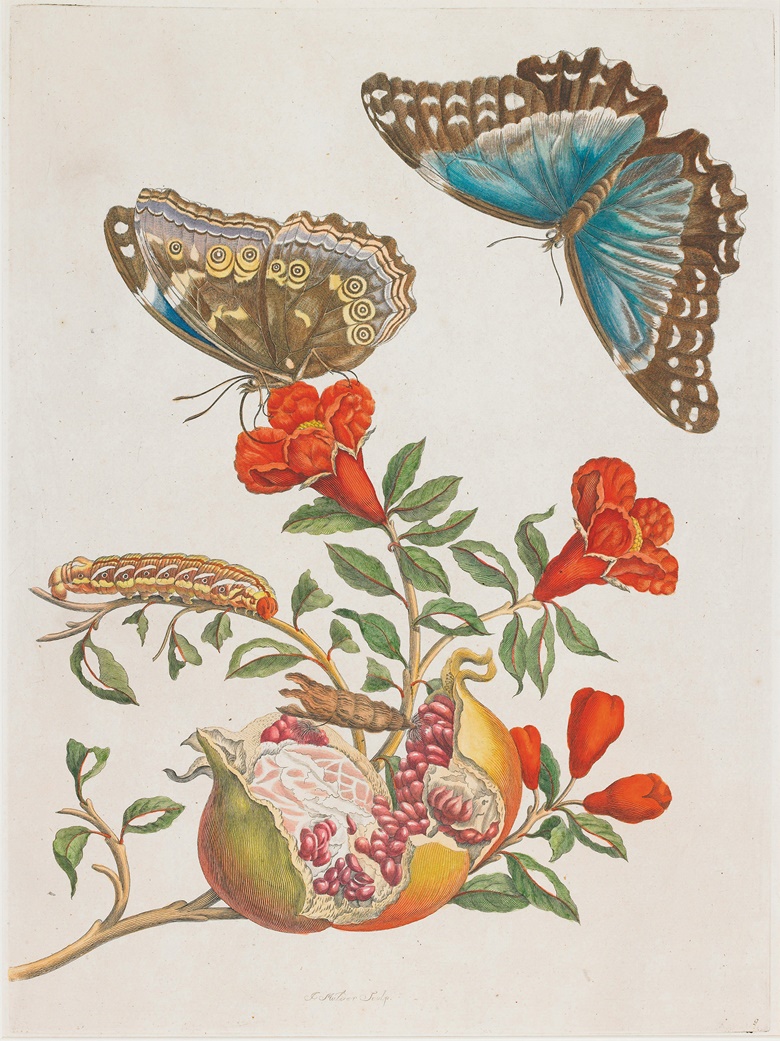
Maria Sibylla Merian (1647-1717), A pomegranate tree showing both its flowers and fruit, a caterpillar, its chrysalis, and two butterflies. Illustration from Metamorphosis insectorum Surinamensium, 1719
Among those she pinpoints are the Guggenheim curator Naomi Beckwith and the American art historian Linda Nochlin, whose groundbreaking 1971 essay Why Have There Been No Great Women Artists? inspired the name of Hessel’s Instagram account. ‘They have become icons, and rightly so,’ she says. ‘It’s so important to highlight those who are working hard to change our understanding of art and who makes it. It’s why I try to speak to as many different people as possible on my podcast.’
Although there is still much to be done to redress the gender imbalance in the art world, the past seven years have seen great progress. ‘So much has changed since Frances Morris was appointed director of Tate Modern in 2016,’ Hessel explains. ‘Since then, we’ve seen women at the helm of the Louvre and the National Gallery of Art in Washington, D.C., and more solo exhibitions of women artists.’
.jpg?mode=max?w=780)
Artemisia Gentileschi (1593-1654) and Associate, The Triumph of Galatea. Oil on canvas. 77½ x 100⅛ in (196.85 x 254.5 cm). Sold for $2,130,000 on 15 October 2020 at Christie’s in New York
For Hessel, the Artemisia Gentileschi exhibition at London’s National Gallery in 2020 was a momentous occasion. ‘It was their first ever solo show by a historic female artist,’ she says, adding that women artists still make up just one per cent of the National Gallery’s collection.
‘Gentileschi is my absolute favourite artist. She was groundbreaking in the sense that she made it her mission to paint female heroines like Judith [Beheading Holofernes] and Susanna [and the Elders] from a female perspective.’
.jpg?mode=max?w=780)
Clara Peeters (1589-1657), Roses, lilies, an iris and other flowers in an earthenware vase, with a pot of carnations and a butterfly on a ledge, 1612. Oil on panel. 25⅞ x 19¾ in (65.7 x 50.2 cm). Sold for $1,500,000 on 10 June 2022 at Christie’s in New York
She cites the 16th-century Flemish painter Clara Peeters as another pioneer, an artist who pushed the limits of still-life painting by asserting her identity in her work. ‘Peeters often painted discreet self-portraits in her pictures,’ Hessel explains, pointing to the bust on the front of the vase in the painting above, sold at Christie’s in June 2022. ‘I love her humour and her determination to establish her status as a painter, given the strictures on women at the time.’
Talk turns to marriage and misattribution, two of the primary reasons why so many historic women artists have been long overlooked. ‘Women artists were often completely banished from painting or working after they got married,’ she says. ‘Art dealers would also often scratch out the name of a woman artist and replace it with that of a male peer to increase a work’s value.’
.jpg?mode=max?w=780)
Judith Leyster (1609-1660), Merry Company. Oil on canvas. 29⅜ x 24⅞ in (74.5 x 63.2 cm). Sold for £1,808,750 on 6 December 2018 at Christie’s in London
Judith Leyster is a case in point. The Dutch Golden Age painter was dubbed ‘the true leading star in art’ by a Haarlem historian in 1648, and mixed with the most prominent artists of the era. Yet despite her early success, her career declined following her marriage in 1636, and her name soon fell into obscurity.
She wasn’t rediscovered, says Hessel, until 1893, more than 200 years after her death, when a court case revealed that Carousing Couple (1630), which had been purchased by the Louvre as a Frans Hals, was in fact signed with the initials JL, accompanied by a star.
Since then, many more misattributed works have come to light, among them Merry Company (above), which was believed to be a collaborative work between Leyster and Hals when it was exhibited at the Guildhall in London in 1903, but is now recognised as a fully autograph work by Leyster. ‘I think there’s something so energetic about it,’ says Hessel. ‘It feels as though it could be made today.’
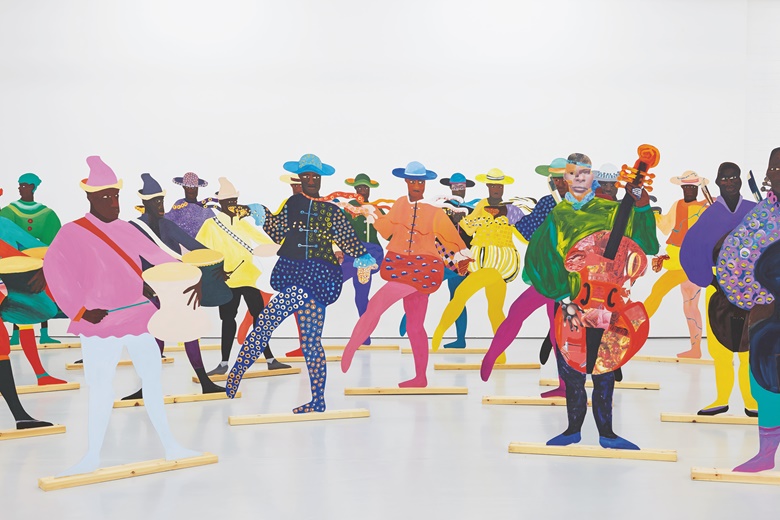
Lubaina Himid (b. 1954), Naming the Money, 2004. Installation view of Navigation Charts, Spike Island, Bristol, 2017. Artwork: © Lubaina Himid. Courtesy of the artist, Hollybush Gardens, London and National Museums, Liverpool. © Spike Island, Bristol. Photo: Stuart Whipps
Which leads us to the influence of classic works on contemporary artists. ‘Younger artists are looking back more than ever because they have access to so much historical source material on the internet,’ says Hessel. ‘It’s just so easy to Google or search on Instagram for Old Master works and the stories behind them.’
She cites three contemporary oil painters, Jadé Fadojutimi, Somaya Critchlow and Flora Yukhnovich, who all draw inspiration from the past. ‘They prove the relevance of Old Master paintings and antiquity today,’ she says. ‘And Lubaina Himid is a fantastic example of an artist who actually uses objects ingrained with history to challenge what they once meant and what they mean now. I think we are all fascinated by old objects and the stories they have to tell.’
The trend for mixing contemporary pieces with antiques in home interiors reinforces this notion. ‘I think as a collector you want to create unexpected dialogues,’ she says.
Sign up today
Christie’s Online Magazine delivers our best features, videos, and auction news to your inbox every week
Subscribe
Hessel’s passion for driving change is palpable. But what’s her ultimate goal? ‘I want to break down the elitism in art,’ she says. ‘So many people think art history is not for them because they’re not familiar with the world of galleries, museums or auction houses. But I think that there is an artist or an artwork that will speak to every single person on this planet. You just have to find it.’
Hessel, of course, is paving the way, one Instagram post at a time.
The Story of Art without Men by Katy Hessel is published by Penguin
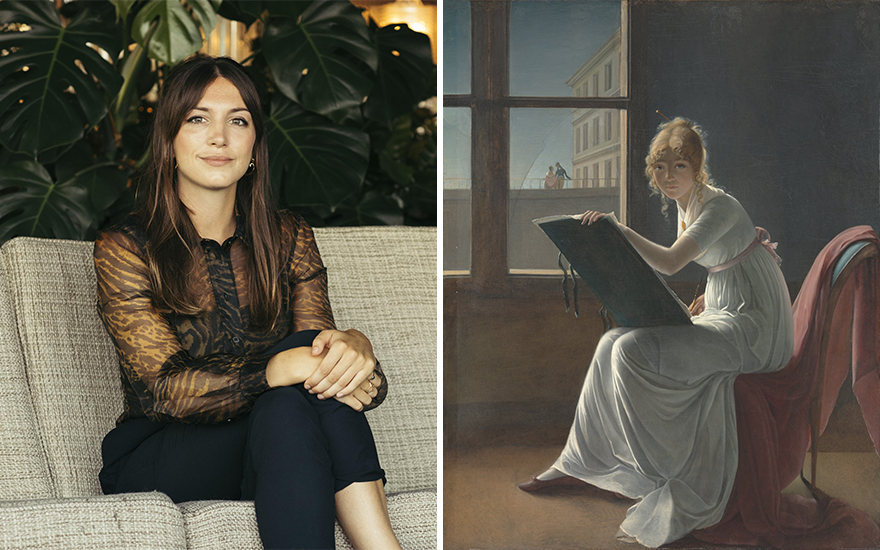
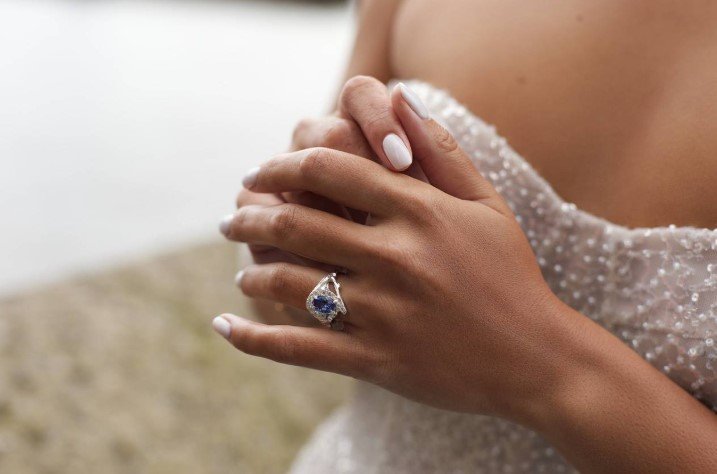



More Stories
Special Tour “Painting History” Showcases Two Exhibitions at The Hood: “Historical Imaginary” and “Kent Monkman: The Great Mystery”
The Ambassadors by Hans Holbein the Younger | History Of The Painting
14 Groundbreaking African American Artists That Shaped History